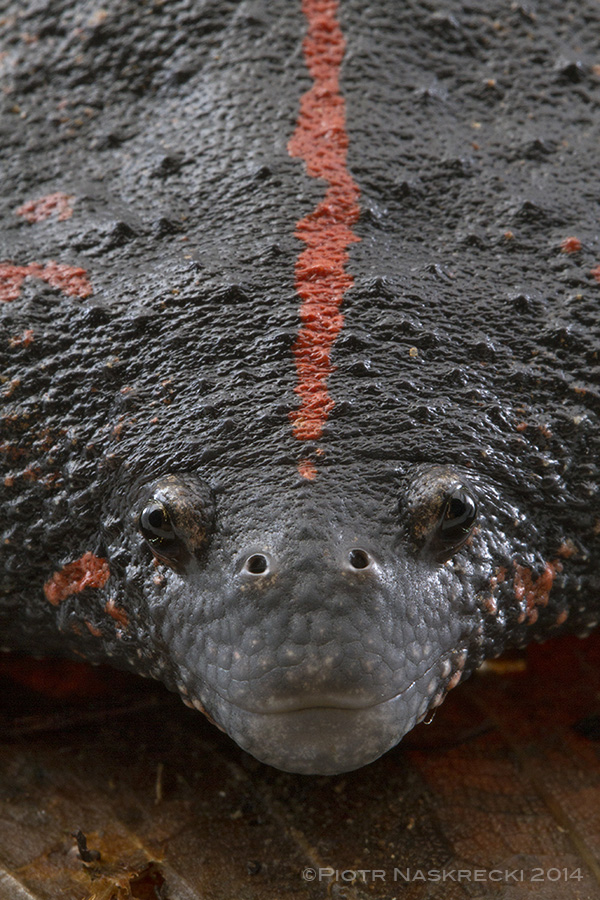
We climbed deeper into the cave, approaching a site of a Mayan ritual. Here – Abel, our half Mayan guide explained – in this pitch-black underground chamber in one of Belize’s countless limestone caves, ancient Mayans performed gruesome bloodletting rituals, slicing women’s tongues and men’s genitals to entice gods to relieve dry, parched fields with life-giving rains. He pointed to razor-thin slivers of obsidian laying among shards of broken clay pots. In the light of my headlamp I could see a few piles of ash that looked as if the fire went out only a few hours ago, but in fact they had burned hundreds, perhaps over a thousand years before I was born, and the complete lack of air movement, or any other disturbance, preserved them perfectly.
The blood rituals seemed to work, and rains came back every year. Why the Mayans thought that the gods would get a kick out of people injuring themselves is a mystery (I guess gods all over the world have similar tastes.) But, as it turns out, the Mayan self-mutilation might have been for nothing because another creature was already working on their behalf, calling to Chaac, the Mayan god of rain.
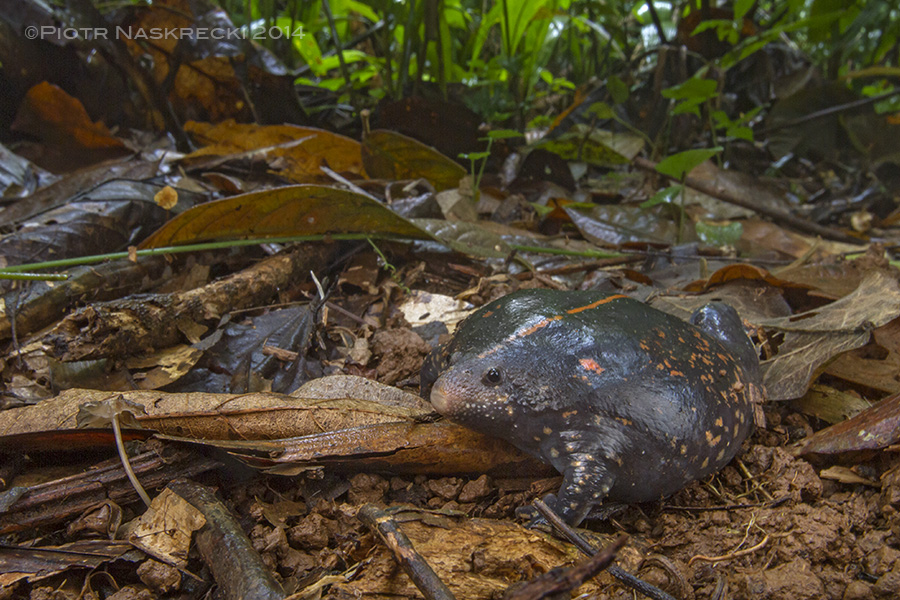
Uo, as the rain-calling animal is known among the Mayans, an onomatopoeic name based on its strange courtship song, is a frog. But it is difficult to tell by just looking at it as it is a frog like no other. When I saw it for the first time it took me a second to make sense of the fist-sized black and red balloon with short, stubby legs. It seemed that an animal like this could not possibly be able to walk, but in fact these frogs are remarkably agile and can even jump. But what it is really good at is digging.
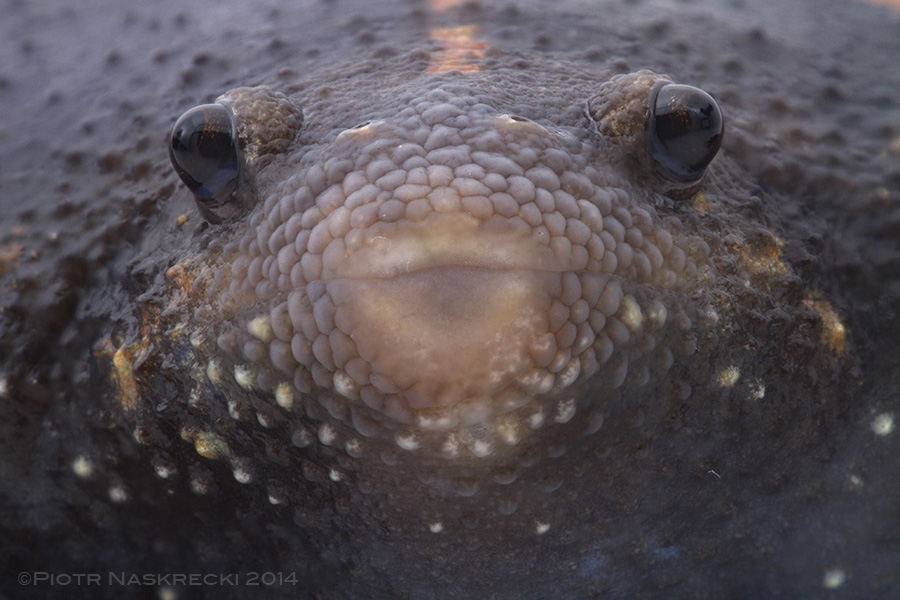
Uo, or the Mexican burrowing toad (Rhinophrynus dorsalis), as it is known among herpetologists, is the only member of a relatively basal (“primitive”) family of amphibians, the Rhinophrynidae. Its closest living relatives are equally strange, strictly aquatic clawed frogs of South America and Africa (Pipidae). Rhinophrynus are found in low laying forests from the southernmost tip of Texas to Costa Rica. Among frogs they are unique in having their tongue attached to the back of the mouth the way we, mammals, do – in all other frogs the tongue is attached at the tip, and is flipped forward and upside-down when hunting.
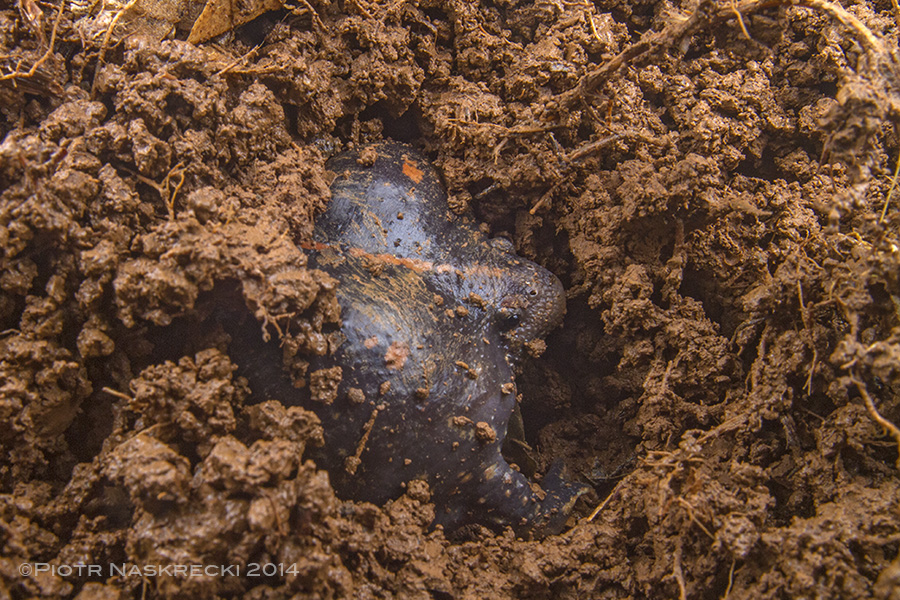
Looking at the face of this animal it is difficult to see any resemblance to a typical frog. Uo’s mouth is tiny and surrounded by strange cushion-like pads. Electron microphotography revealed that every single cell around the mouth of the frog is armed with a keratinous spike, which likely protects the mouth when the frog pushes forward through the soil. Like most fossorial frogs, uo buries itself backward, using its short but powerful hind legs as shovels. It also inflates its body rhythmically as it goes deeper into the soil to widen and stabilize the sides of the burrow. But once fully dug in, the frog can move forward, pushing its snout towards termite and ant colonies, the source of its food. Apparently nobody has ever seen uo feeding, as it all happens underground, but it seems that it hunts by sliding the tongue along special grooves in its toothless mouth and swallows the prey – stinging ants and biting termites – alive and whole. To minimize the effect of the aggressive insects, the esophageal lining has leaflike projections that vastly accelerate food digestion.
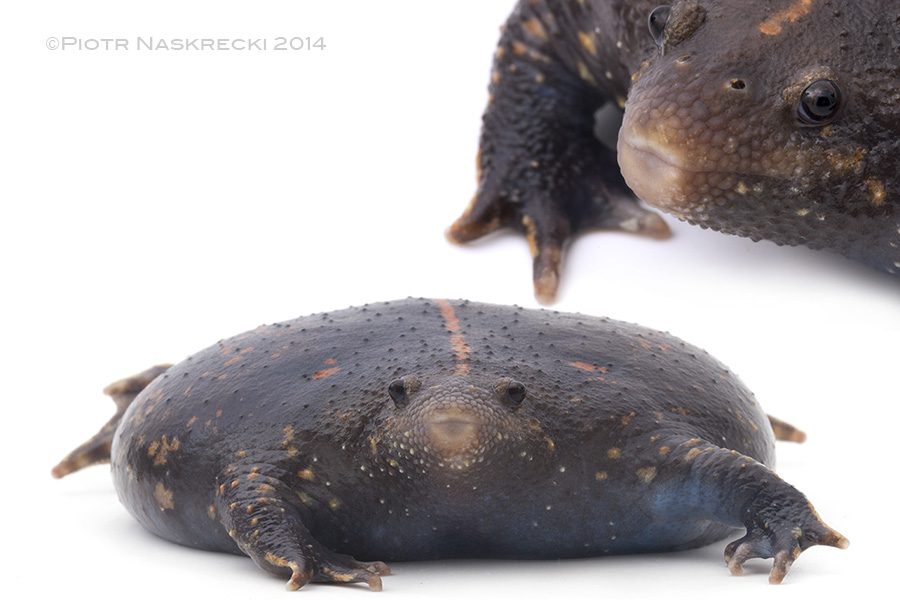
When I was in Belize last week, teaching photography at BugShot, it was clear that the rain god Chaac had already heard the call of uo, and was very generously spilling his rain-filled gourds onto the earth. After a few days my black backpack turned moldy white, and my laptop flickered and died. Mosquitos seemed to target mostly the corners of my eyes and deposited several botfly larvae onto my skin, but seeing the amazing uo made it all worthwhile.
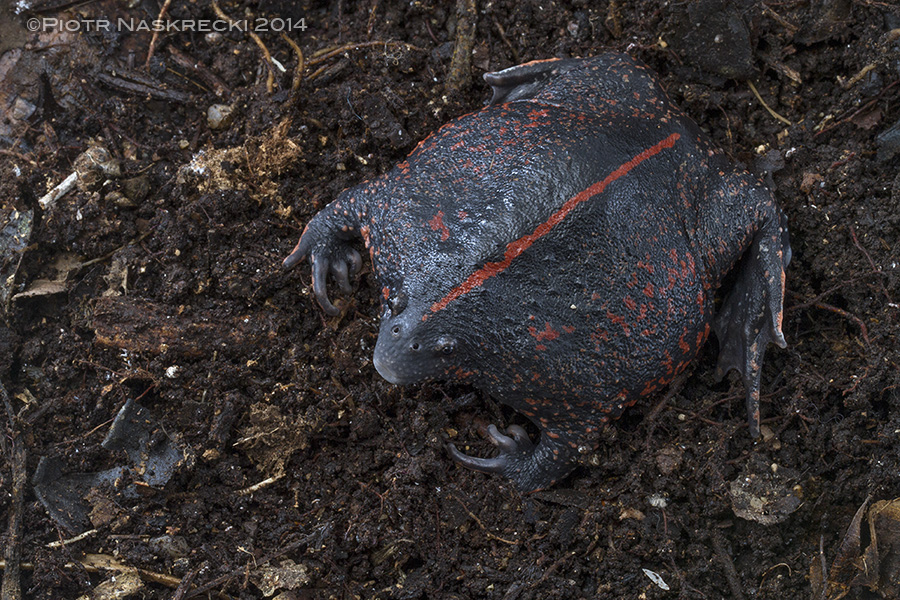

Fantastic photos of the ‘uo’ or ‘wo’. I haven’t been able to find them anywhere else. Is it possible to get permission from you to use them for my Maya classes at UCL? Fully acknowledged of course.
Pretty cool. I am not a amphib guy but I couldn’t help notice the similarity between this and the purple frog from peninsular India Nasikabatrachus sahyadrensis. The phenotypic convergence is striking, given their burrowing habits. However those ‘small cushion like pads’ around their mouth are very intriguing. Bet they are loaded with some sensory neurons for underground navigation/ finding food, like the finger like appendages of the star-nosed mole (Condylura cristata)
Thanks for such a fascinating, informative story and wonderful pictures…… :)
Amazing frog and amazing photos!!! Thank you, Piotr. I so need to find one of these one day!
Piotr — Thanks for another fascinating post. I found uo’s cousin (one of the Pipidae) useful when writing “The Zoophabet” and got stuck on “X”. Herewith:
Xenopus frogs with clawed back feet are also called platannas,
They live in southern Africa and never eat bananas,
Their skin is awfully slimy and they haven’t got a tongue,
How can they lick and ice cream cone or holler at their young?
With fond memories of BugShot 2013 — Lee